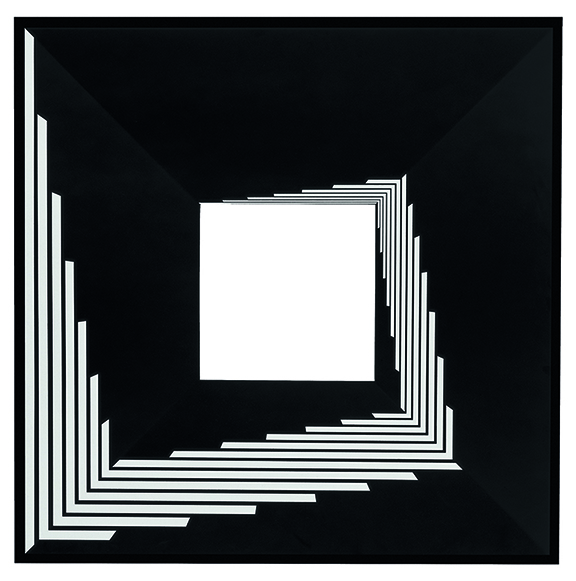The dominating colours in Marcello Morandini’s work are the non-colours black and white. This applies both to his works as a designer as well as those as an artist. “My idea is an alphabet in black and white, which offers me an immeasurable number of possibilities for conveying emotions, and with which I can arrive at highly differing results”, as Morandini explained in the catalogue to the 2006 exhibition Bianco e Nero at Museum Ritter.
Marcello Morandini has remained faithful to this self-imposed constraint right from his earliest works, and demonstrates to this day just how fruitful it is. Perhaps one should also take this as being more of a conceptual maxim and seek the essence of his work elsewhere. One of his early pieces dates from 1969 and bears the title 56 B – 1969. It was done at the time when Op Art presented a profound, trail-blazing new beginning in art. While previously art and the effect that it created had assumed a more or less passive viewer, Op Art fundamentally questioned this prerequisite. The practitioners of Op Art took it as given that the viewer’s perceptions not only influenced the work but by and large constituted it in the first place.
Morandini’s work must also be seen in this chronological and artistic context. It is, as we have already seen, a composition in black and white. The square picture ground is black but with another square cut out of its centre that allows the white surface to be seen behind. This in turn is framed by a white geometrical pattern that emanates, like hatching, from the left hand margin. As a result, the square of the picture bearer moves inwards in a spiral on the elided form – and back out again. Although the viewer is able to grasp this logical composition in formal terms, its inner dynamics go far beyond such patterns of description. Trying to understand the arrangement of the black and white elements in the picture is every bit as perplexing as trying to take in the overall picture visually. It topples, it undergoes distortions and changes its perspective. But who or what is this “it”? Is it the picture that evokes this effect, or isn’t it rather our own power of perception that suggest this to us? (Ralf Christofori)
Marcello Morandini
1940 born in Mantova
Lives and works in Varese


